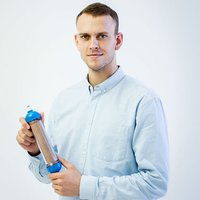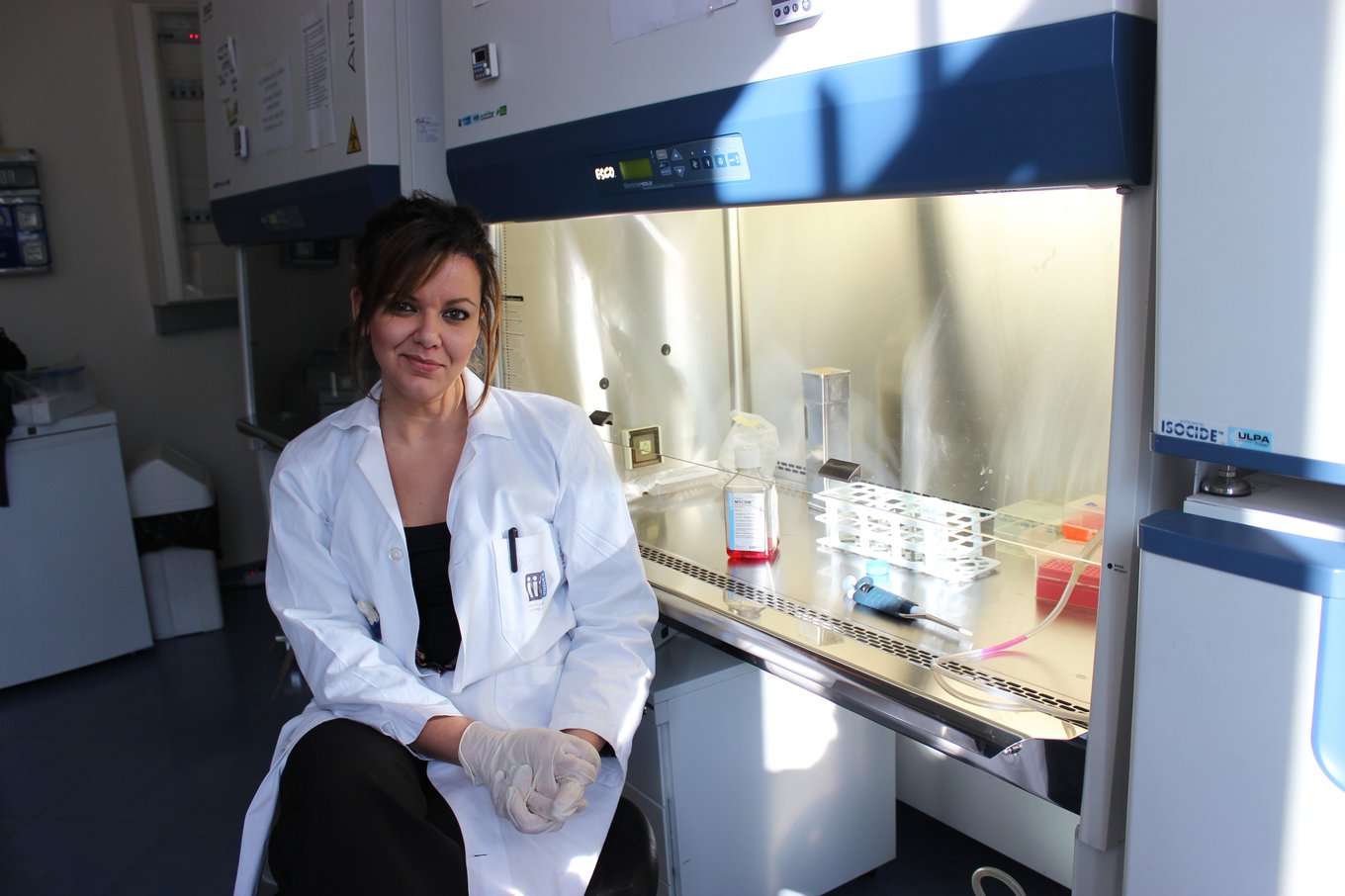The researcher Francesca Santoro has always had a special sensitivity towards women abuse victims who have suffered large skin wounds. For this reason, after completing her master's degree from the University of Naples Federico II (Italy) and a doctorate at the Technical University of Aachen (Germany), this biomedical engineer decided it was time to "develop a project that would help people".
Santoro spent three years in the Chemistry Department at Stanford University (USA) exploring the possibilities that nanotechnology opens up for designing new materials that interact better with living cells. Her work crystallised in her current project: a photovoltaic material that can be integrated into a plaster, which transmits electrical pulses to skin cells damaged by burns or injuries to accelerate their regeneration. Her first steps towards this objective, which she is now pursuing from her own laboratory at the Centre of Advanced Biomaterials for Health at the Instituto Italiano de Tecnología, have led her to become one of the winners of the Innovators Under 35 Europe 2018 awards from MIT Technology Review.
Santoro explains that current alternatives for treating serious burns either use the patient's own skin (for example, taking a piece of the gut and grafting it onto an arm), or use tissues from cadavers. The first option is not ideal, because it creates a new wound and it is not adequate for covering large areas, and the second entails a high risk of infection and rejection. Skin substitutes made from stem cells are another way, but there is currently insufficient availability to treat the more than 10 million people who suffer from severe burns each year.
Fortunately, there is a promising approach that works by accelerating the regeneration of damaged skin using electrotherapy, i.e. applying small electrical pulses to the cells to accelerate the proliferation of fibroblasts and keratinocytes, cells that help the body to create healthy skin. At the cellular level, this electric pulse triggers the production of certain proteins that give instructions to these cells to proliferate faster. Santoro explains that these cells "take about two weeks to proliferate and lead to the healing of the wound", and adds: “We are doing research into whether with these pulses we can give them a push and reduce the time by half or more, so that they are faster than the non-beneficial scar cells, whose proliferation is usually faster".
Current devices to perform this type of treatment are very large, require an external power supply and cannot cover large damaged areas. To avoid these problems, Santoro proposes creating a plaster that captures solar energy thanks to a thin photovoltaic panel at the top, which is organic, flexible and lightweight. This panel transforms light into electricity and transmits it in the form of controlled pulses to the damaged skin cells with which it is in contact.
Through her research, published in several scientific journals, Santoro has discovered that by incorporating a few small three-dimensional 'teeth' in the form of nanoscopic pillars between the panel and the cells, the coupling between the two elements improves significantly. In addition, these nanostructures would reduce the energy needed to stimulate the cell with a flat electrode; there is less dissipation because the pillars are only a few nanometres from the membrane, explains the young woman.
Santoro has created a first prototype of the flexible solar panel that is stable in contact with cells. Her next step is to incorporate the nanoscopic pillars by way of electrode and confirm that it is working properly and maintains its integrity. In the future, they hope to add to the device a battery to store part of the solar energy and even sensors that monitor the healing, the state of degradation of materials and its temperature. This plaster would be a low cost, disposable wearable that could be used by the patient. It would not need to be plugged in and could be printed in various sizes to cover areas of multiple sizes.
Ruben Costa, the principal researcher at the Institute of Materials in Madrid (Spain) and member of the jury of Innovators Under 35 Europe 2018, believes that, "despite the fact that the project is at the development stage, the idea, the value of fundamental research and the final product presented by Santoro are clear." According to Costa, this innovator has "the necessary background, initiative and leadership to carry out this project."
By Elena Zafra
Translation: Lisa Rushforth




